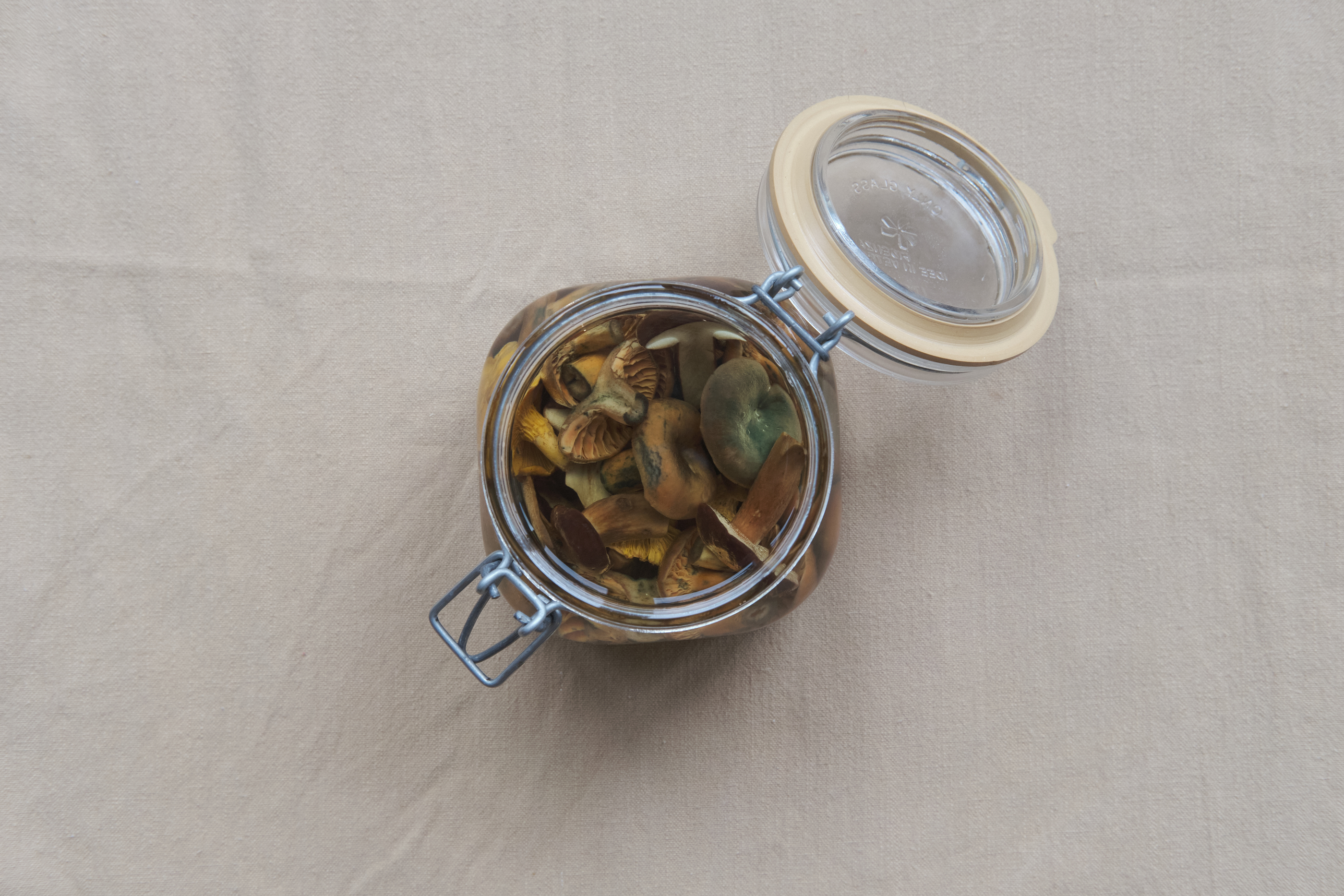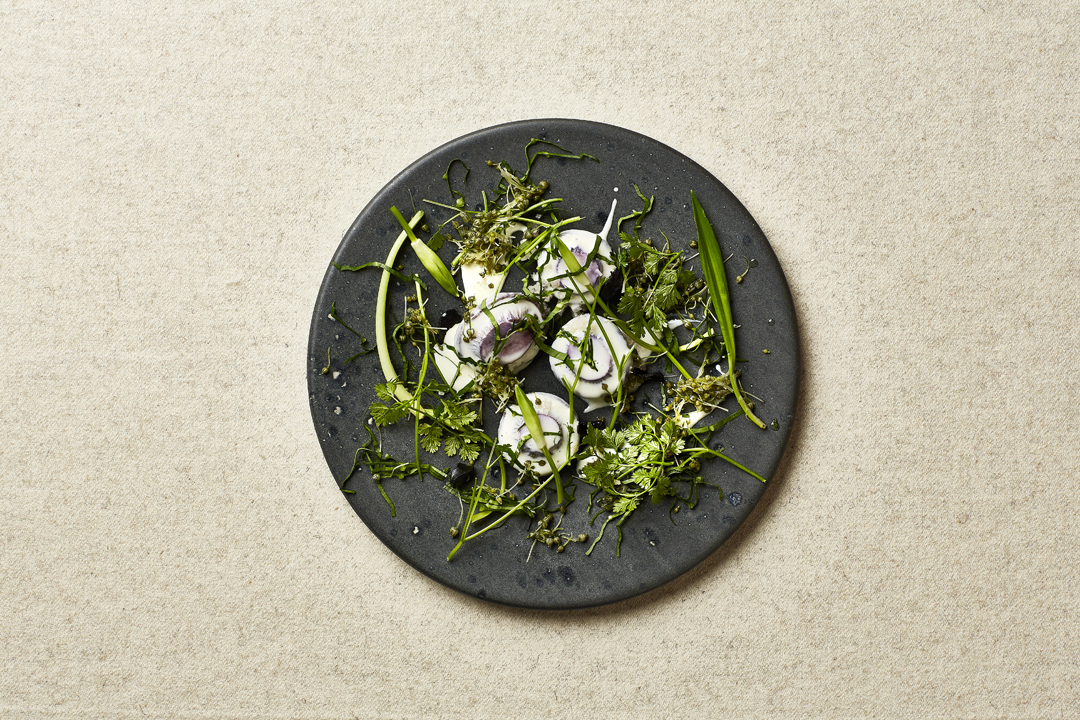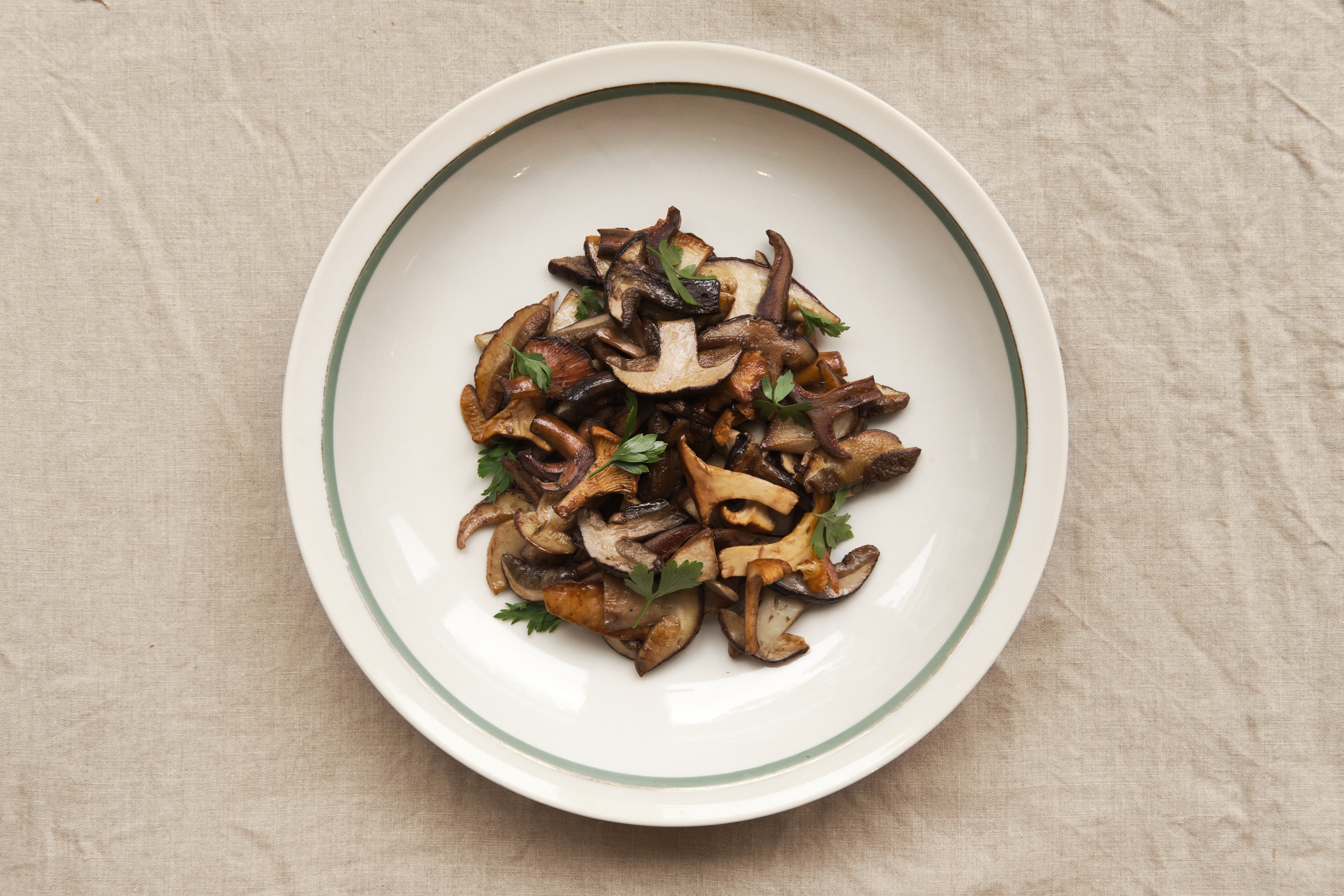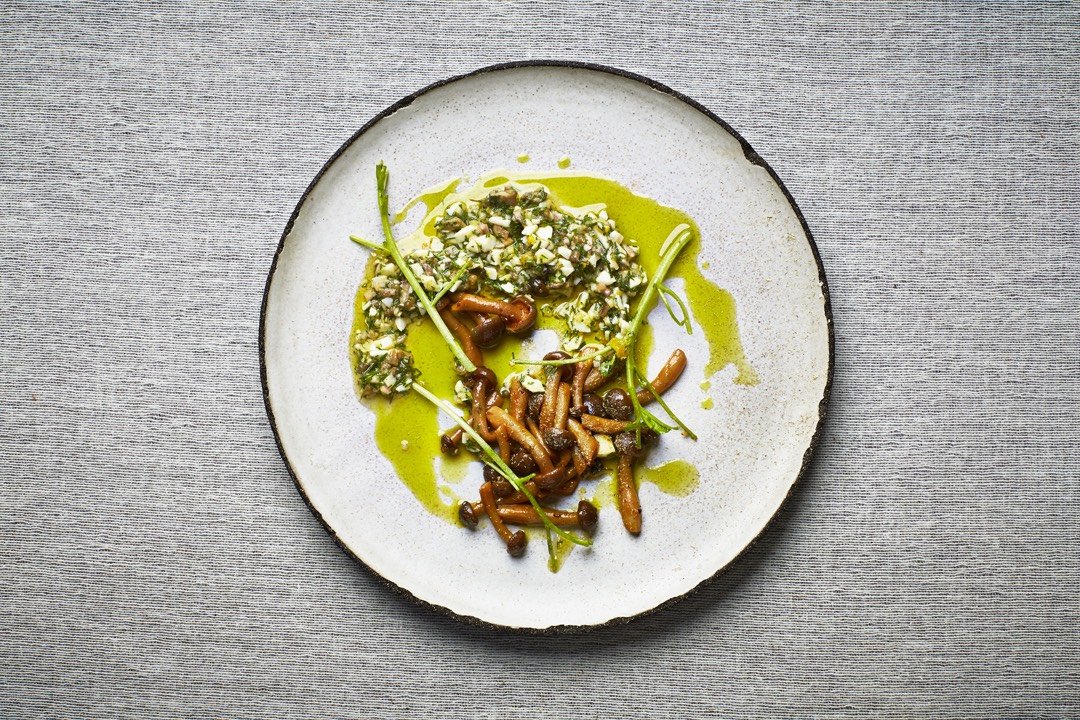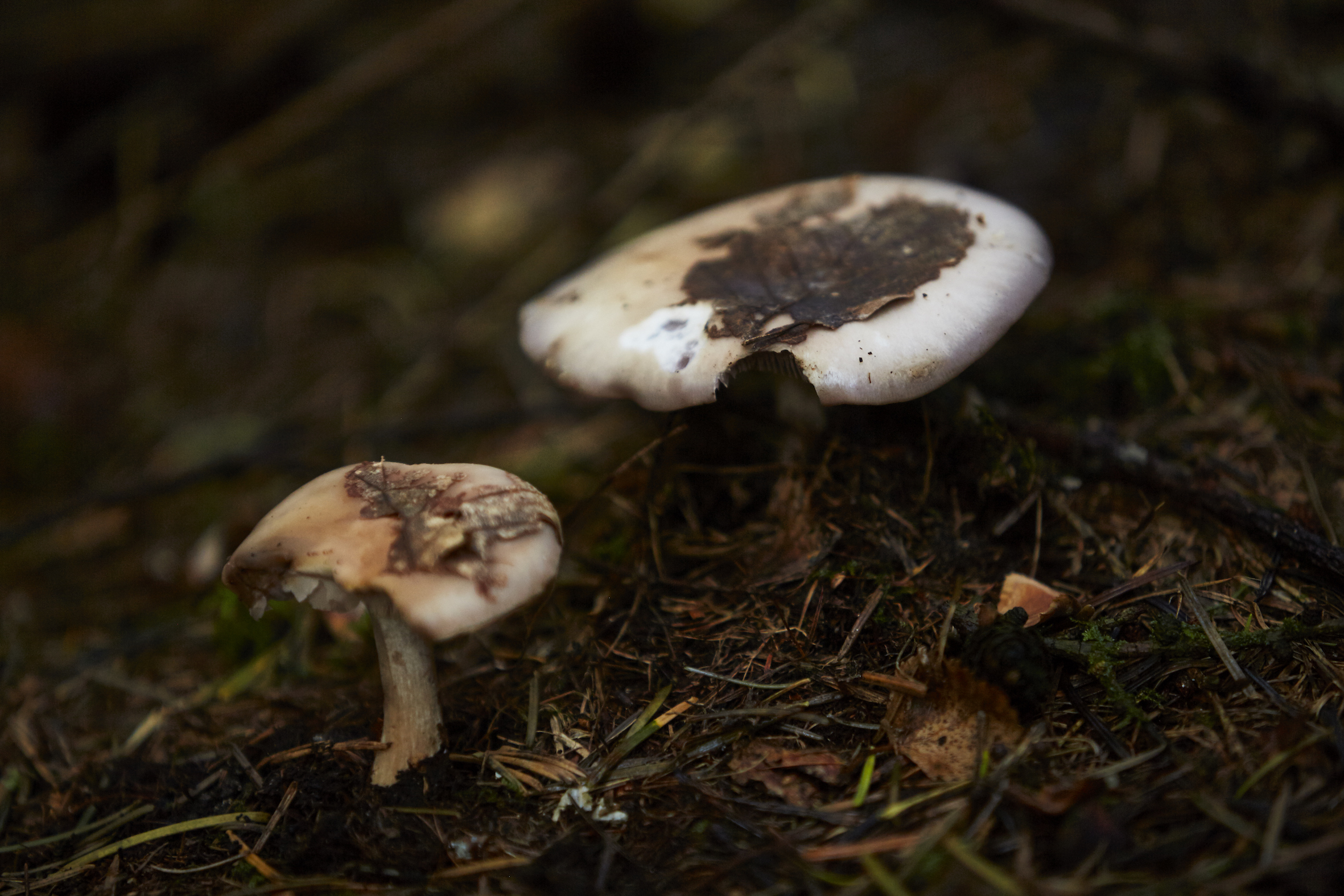
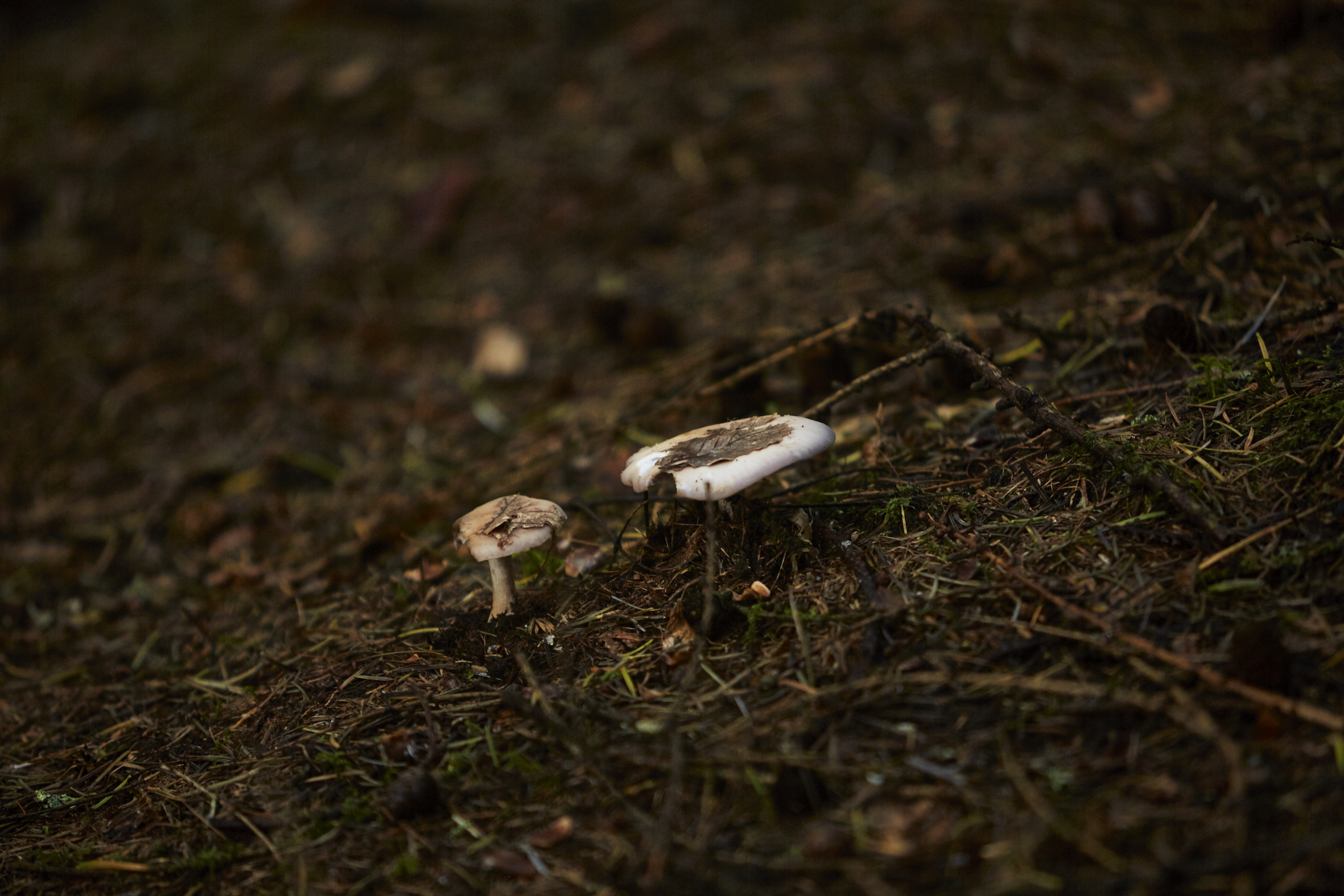
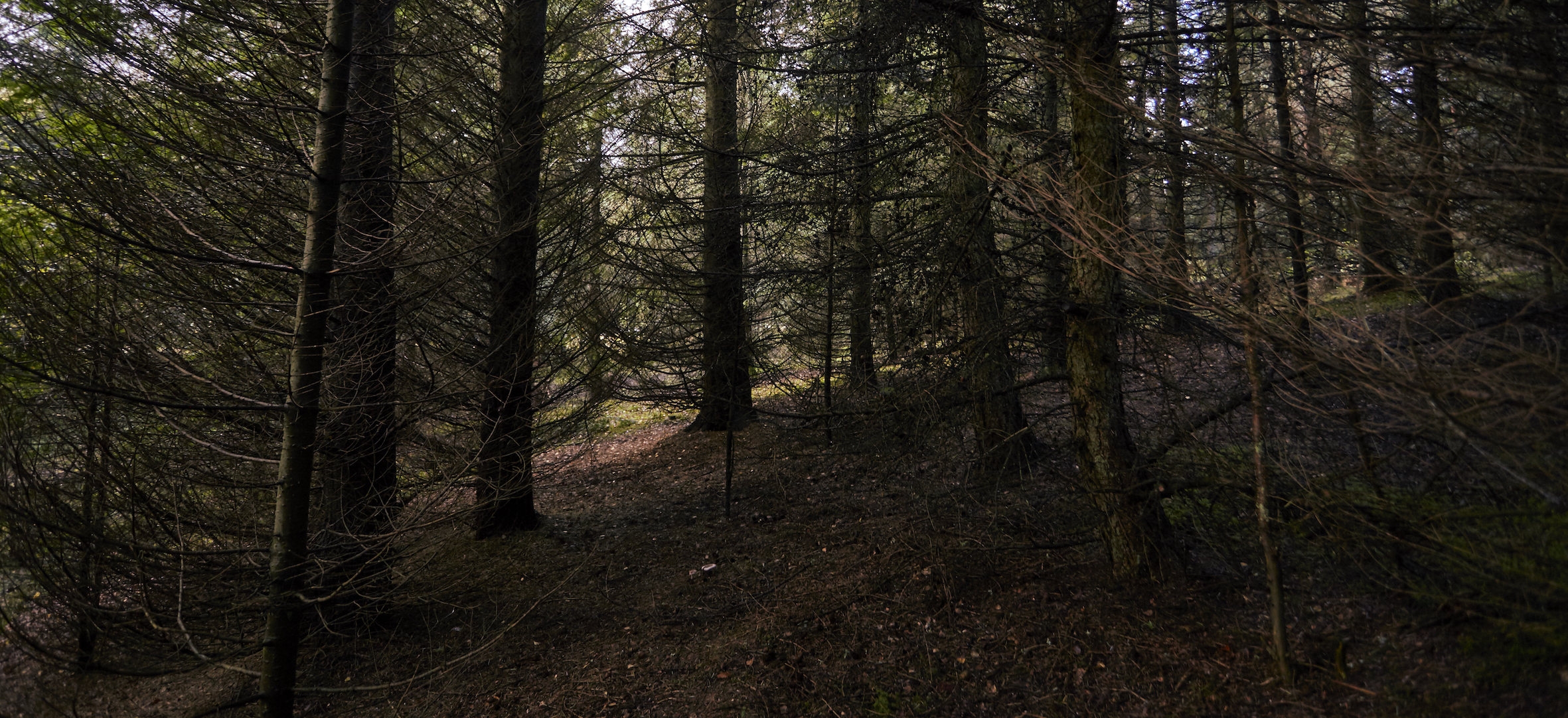
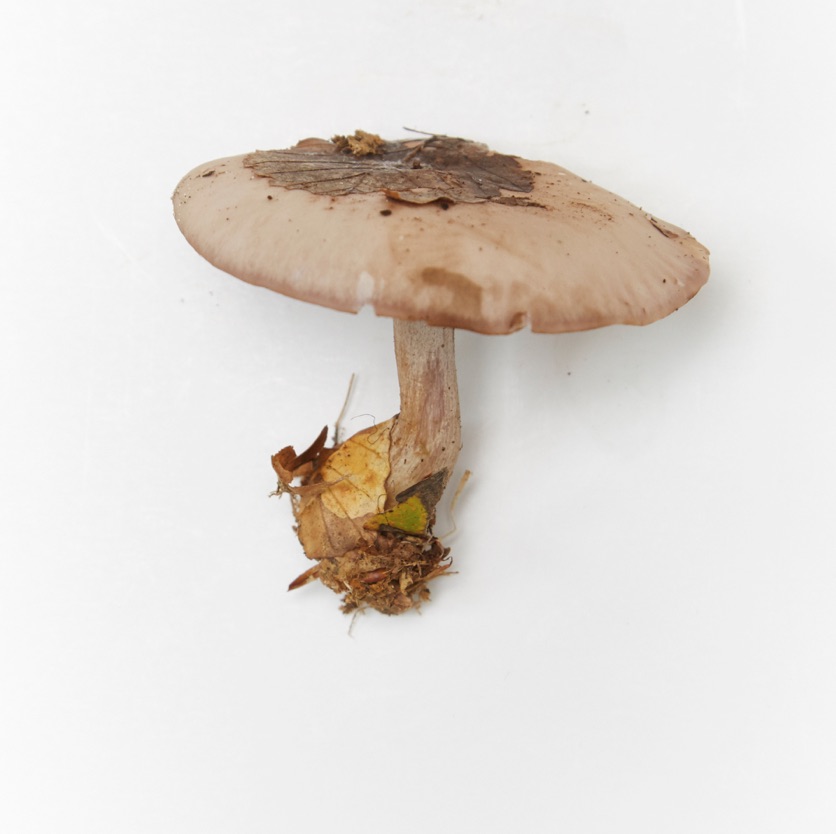
Wood blewit
These perfect purple rounds that dot a forest floor in autumn are a remarkable sight to behold. Wood blewit is also called lepista nude and, when cooked, is a very tasty mushroom.
-
Where to Find It
Wood blewits survive by breaking down dead plant matter, so they prefer to grow in thick layers of leaves or needles, often in groups. Look for them in compost heaps where they have plenty of food, or on the forest floor where they grow naturally in geometrically perfect circles. Wood blewits' favorite places are those that are moist and fertile—especially in the dark parts of coniferous forests.
Deciduous forests, coniferous forests.
-
When to Find It
Wood blewits fruit in October, but you may also be lucky enough to find them at the end of summer and a bit into fall. Frost marks the end of the season for wood blewits.
Entire mushroom: September, October, November.
-
How to Spot It
Wood blewits can grow to be up to 10 cm tall. The slightly fleshy caps on the largest specimens measure 10-15 cm in diameter, while the light violet stems grow to be a couple cm thick at most. The caps are brownish with a violet tinge, with younger ones tending more to purple amd the older ones to greyish-brown. The cap’s rim curves and rolls inward, while its center is often crowned with a small bump. The violet gills are fine, and dense; the stem straight and strong.
-
How to Spot It
Carefully twist the mushroom loose or cut it at the base. Larvae often attack wood blewits, so check the cut to see if the mushroom is infested with vermin or nice and even.
Risk of misidentifying the plant
Wood blewits can be confused with field blewits and sordid blewits, which are also edible so long as they are cooked. Field blewits have a very distinctive purple stem (especially on the younger specimens) and a browner cap. It would be more unfortunate to confuse them with the violet webcap, which can be quite toxic, but is rare and mostly found in deciduous forests. Young webcaps have a cortina between the cap and the stem, while the older specimens have rust-brown gills. You'll find neither of these traits in wood blewits, which can also be identified by their sweet smell.


